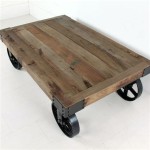Types of Table Service in Food and Beverage
The style of table service employed in a food and beverage establishment significantly impacts the dining experience. Different service styles cater to various restaurant concepts, customer expectations, and operational efficiencies. Understanding the nuances of each type allows restaurant owners and managers to tailor their approach, optimizing customer satisfaction and profitability.
1. Plate Service (American Service)
Plate service, also known as American service, is the most common type of service in casual and fast-paced dining environments. In this style, food is plated in the kitchen and brought to the guest by servers. This method allows for quick service and efficient plating, minimizing wait times for guests. It also simplifies operations in the kitchen, requiring fewer skilled servers compared to more elaborate service styles.
Plate service provides portion control and consistency, ensuring each guest receives the same presentation and amount of food. This standardization benefits both the restaurant and the customer, creating a predictable dining experience. While efficient and straightforward, plate service may lack the personalized touch of other styles and offer limited opportunity for tableside interactions between servers and guests.
2. Family-Style Service (English Service)
Family-style service, sometimes referred to as English service, involves placing large platters and bowls of food on the dining table. Guests then serve themselves, passing dishes around as in a family meal. This style fosters a convivial atmosphere, encouraging interaction and sharing amongst diners.
This approach offers flexibility in portioning, allowing guests to choose the amount they desire. It's a particularly suitable choice for large groups or family gatherings, streamlining the serving process and creating a sense of communal dining. However, family-style service may not be ideal for all types of cuisine or occasions, particularly those demanding more formal presentation or individualized plating.
Maintaining appropriate food temperatures can also present a challenge in family-style service, particularly with larger tables. Additionally, careful attention to hygiene and proper serving utensils is essential to prevent cross-contamination.
3. Cart Service (French Service)
Cart service, also known as French service, represents a more elaborate and formal style of dining. Food is prepared or finished on a gueridon, a mobile cart equipped with a cooking surface, brought tableside by skilled servers. Guests can observe the final preparation, adding a theatrical element to the dining experience.
This highly personalized service allows for customization and interaction with the chef de rang, responsible for the tableside preparations. It fosters a sense of luxury and occasion, enhancing the overall dining experience. However, cart service requires highly trained staff, specialized equipment, and more dining space to accommodate the gueridon, making it a more costly and time-consuming option.
The interactive nature of cart service, while a significant advantage, can also disrupt the flow of service if not managed efficiently. Careful coordination and skilled execution are essential for a seamless dining experience.
4. Platter Service (Russian Service)
Platter service, also known as Russian service, involves fully prepared dishes presented on silver platters by servers. Guests remain seated while the server portions the food onto individual plates tableside. This style strikes a balance between the efficiency of plate service and the personalized touch of French service.
Russian service offers a more formal presentation compared to plate service, adding an element of elegance to the dining experience. It allows for some degree of customization, as guests can indicate their preferred portions. However, this style still requires skilled servers proficient in handling and portioning food tableside.
The presence of servers handling food near guests can be perceived as intrusive by some diners. Consistent pacing and efficient service are crucial to minimize disruption and maintain a smooth dining flow.
5. Buffet Service
Buffet service presents a wide array of food items on a central serving table or counter. Guests serve themselves, choosing the dishes and portions they desire. This style is particularly suited for large gatherings, events, and casual dining settings, offering variety and flexibility.
Buffet service is cost-effective and efficient, requiring fewer servers compared to other styles. It allows guests to customize their meals and explore different options. However, maintaining food temperatures and freshness, especially during peak hours, can present a challenge. Hygiene and proper food handling practices are paramount to ensure food safety in a buffet setting.
The self-service nature of buffets may lead to long queues and congestion, impacting the overall dining experience. Careful planning and organization, including optimal buffet layout and sufficient serving stations, are essential to mitigate these challenges.
Choosing the appropriate table service style is a crucial decision for any food and beverage establishment. Factors such as restaurant concept, target audience, menu design, and operational capabilities should all be considered when selecting the most suitable service method to optimize both guest satisfaction and operational efficiency.

Table Service Styles Placements And Functions Polo Tweed

Table Service Styles Placements And Functions Polo Tweed

A Guide To The Various Types Of Table Service Cvent Blog

Types Of Service And Table Settings In Waiter Waitress Training

The Diffe Types Of Table Service You Need To Greycoat Lumleys

A Guide To The Various Types Of Table Service Cvent Blog

Ultimate Guide To English Food Beverage Service Style

Service Styles Food And Beverage Training 3

Table Service Styles Placements And Functions Polo Tweed

Choose The Best Service Style For Your Next Event Cvent Blog
Related Posts








